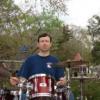
Posted
Hi there,
I bother you again with a piece for harpsichord (for two harpsichords, to be exact):
[color=#FF0000][size=16]"2Clavicembali - energico e passionato"[/size][/color]
(https://w.soundcloud.com/player/?url=https%3A//api.soundcloud.com/track…)
Apart from the middle part (between 2:33 and 4:05) everything was made in Synfire.
If you want to give a feedback, I would be particularly interested in your opinion about the end of the piece (the last minute). I made some experiments with the Chromatic parameter there, but maybe it sounds a bit too weird.
Tue, 2013-02-12 - 10:47 Permalink
It is heavy listening .. i think i like to hear more structure ....sounds chaotic on the end ...
Counterpoint with two harpsichords can be challenging to master the counterpoint like BACH did in his "Musikalishes Opfer" ( fuga , canon)
This whole work is wonderful described in the book of J.S. Bach's musical Offering from H.T.David -->
Tue, 2013-02-12 - 18:44 Permalink
Thanks for all the feedback.
I liked the chromatic section (I was wondering how SF handled dodechaphonic, serial material).
I'm glad you liked it. But I cannot say that a serial method of composition (in the sense of Schoenberg's twelve-tone music) was used. I simply used the phrases from the earlier sections of the piece and detuned them progressively (in a gradually increasing degree and voice by voice to avoid a too abrupt transition) by drawing vectors into the Chromatic parameters. Chromatism can give nice honky tonk piano effects at a harpsichord, in my opinion.
I wouldn't say that Synfire can not be used for serial composition methods. Of course, you can setup a chromatic scale and work with it at the phrase editor. Or simply use the brown (static) symbols. But that way of working would not have many advantages compared to using a notation editor. I'm certainly not wrong, if I say that Synfire is primarily designed to compose tonal music (or polytonal music with the Pro version). In this field, the software is really strong. And tonal music makes 90 % of the music that surrounds us anyway.
Did you try playing this on a real instrument?
Sorry, no, that's definitively beyond my playing skills. But I've tried to keep the piece playable (playable by a professional performer, not by me). The speed of the fast runs could be a bit of a challenge here and there, but I think it is doable.
I used this virtual instrument:
(http://www.realsamples.net/index.html?d_604_English_Harpsichord___Editi…)
How does it sound at 1/2 or 1/4 tempo?
How would it sound at 1/4 tempo? hmm...probably not "energico e passionato". I could call it "Élégie" or something then. But you've convinced me: I will not write 126 bpm onto the score, what is the tempo in this recording. I will write 125. :lol:
reminds me of something from Zappas Jazz from Hell synclavier period. the end is out there.
Yeah, that describes perfectly the effect I wanted to achieve.
Primarily I wanted to demonstrate with this piece that the harpsichord can be used for much more than just baroque music. It can have a surprising richness of tone in the bass and with its metallic sound it can sound almost like an electric guitar. It is the most underrated instrument, IMO.
Tue, 2013-02-12 - 21:06 Permalink
Jazz from Hell. I must say I am really eager to try something like that myself as soon as possible, after all the gently flowing music examples I created recently. It is incredible how far one can depart from the known and established traditional patterns and still create credible and genuine pieces of music.
Sun, 2014-07-06 - 15:25 Permalink
Another one of my pieces for harpsichord. Again, it's almost entirely a Synfire composition:
[color=#FF0000][size=16]Over Hill and Dale[/size][/color]
(https://w.soundcloud.com/player/?url=https%3A//api.soundcloud.com/track…)
Comments are welcome. I would be particularly interested in what you think about the transitions between the sections of the piece (i. e. at 1:00, 3:00 and 4:20). I have tried to use Morphing, but it didn't work too well here. So I did it more or less manually (or did it simply without a transition, like at 1:00).
Sun, 2014-07-06 - 23:16 Permalink
Thanks for listening, duderanch. I really was not sure if the sections fit together. If you listen to something over and over again, which is inevitable when composing, then at some point you lose the sense of what is good and what is not so good. So, thanks again for your opinion.






